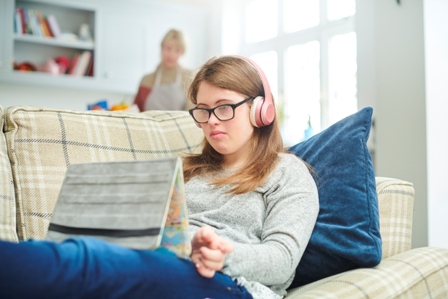
Screen Time
What Every Parent Should Know About Screen Time
Insight into what parents should know about screen time, and how to manage the time they are “connected” (Media Smarts).
Screen Time
Resources on screen time, setting limits, technology addiction, and taming device use (Common Sense Media).
Screen Time and Healthy Balance Quick Activities
Quick activities designed for use with 7 to 11 year olds to help them recognize signs they may experience if they are online too long (Childnet International).
Screen Time and Young Children
A study on screen time and young children (Canadian Paediatric Society).
Screen Time and Young Children: Promoting Healthy Development in a Digital World
A position statement on screen time and young children, and its impacts on their overall well-being (Canadian Paediatric Society).
Digital Media: Promoting Healthy Screen Use in School-Aged Children and Adolescents
A position statement recognizing the effects of digital media on school-aged children and adolescents (Canadian Padediatric Society).
Screen Time
Tips and information for caregivers when it comes to screen time (Canadian Paediatric Society)
Screen Time and Young Children
Advice, information and links to other resources for caregivers on screen time and young children (Caring for Kids).
Screen Time
Resources including Seeing Smart—Guidelines for Screen Use for Kids,Effects of Electronic Screens on Children’s Vision and Recommendations for Safe Use, and Children’s Vision and Screen Time (Canadian Association of Optometrists).
Screen Time vs. Green Time
The report, Screen Time vs. Green Time: The Health Impacts of Too Much Screen Time (Nature Canada).
Device tips
Parents’ Ultimate Guide to Parental Controls
Information on blocking websites, monitoring a child’s phone, tracking a child’s location, and the best parental controls for iOS phones and tablets, as well as Android devices (Common Sense Media).
Phone Safety Tips
Important safety guidelines for caregivers to ensure their kids are safe on their smartphones (Protect Kids Online).
Monitoring Your Teen’s Online Activities
Strategies for caregivers so they can monitor the online activities of their children while online (Protect Kids Online).
Checklist: Set Up Kid's Tech Devices
Resources on setting up youth's tech devices, as well as how to talk about safety online (Internet Matters).
Parents' Ultimate Guide to Smart Devices
A guide for parents on smart devices, such as smart speakers, and if they are safe for kids (Common Sense Media).
Data and Technology Addiction
Data Defenders Guide for Parents
A guide, including the Data Defenders game, to help caregivers talk to children about online use and data (Media Smarts).
Technology Addiction
Articles and videos on technology addiction, including What Parents Need to Know about Social Media Anxiety, and The Sneaky Science Behind Your Kid’s Tech Obsessions (Common Sense Media).
Excessive Internet Use
Resources including an e-Parenting tutorial, Keeping up with Your Kids’ Online Activities, and its Four Tips for Managing Your Kids’ Screen Time (Media Smarts).
Policies and PEI Schools
Digital Citizenship and Technology in Schools
The Digital Citizenship and Technology in Schools policy outlines regulations about the use of communication and technology within the Public Schools Branch's 56 schools by its students, employees, and any other user defined by the policy (Public Schools Branch).
Safe and Caring Learning Environments Policy
The Safe and Caring Learning Environments Operational Policy sets out the expectations for creating and maintaining a safe, caring, respectful and inclusive climate for learning and working, while promoting a shared responsibility of the school community to create and maintain a positive school climate, which includes addressing cyberbullying (Public Schools Branch).
Safe and Caring Learning Environments Operational Procedure
The Safe and Caring Learning Environments Operational Procedure outlining the procedures that take place regarding a variety of incidents, including cyberbullying (Public Schools Branch)
Safe and Caring Learning Environments Incident Response Guide
The Safe and Caring Learning Environments Response Guide outlines steps to be taken in responding to incidents outlined in the policy and operational procedure, including cyberbullying (Public Schools Branch).
List of Prince Edward Island Schools/websites
Prince Edward Island’s Public Schools Branch in its Safe and Learning Environments Policy tasked each of its schools to have in place a Code of Conduct. To see if your school has its own Code of Conduct, visit their website or contact your school. The listing also includes the schools of the French Language School Board (PEI Department of Education and Lifelong Learning).
Public Schools Branch
The Public Schools Branch encompasses the 56 English-language schools in the province, and the more than 14,000 students who attend those schools.
La Commission scolaire de langue francaise (French Language School Board)
La Commission scolaire de langue francaise is an Acadian and Francophone collective that offers French-language education to students with the focus on promoting and developing its language and culture.
